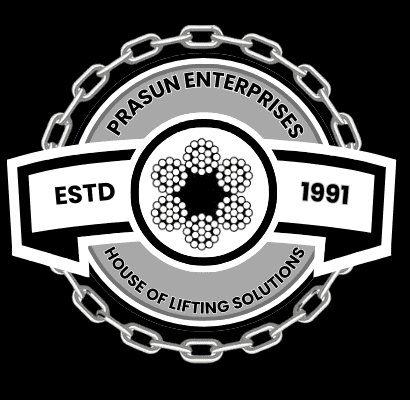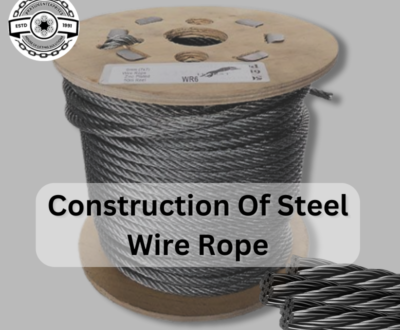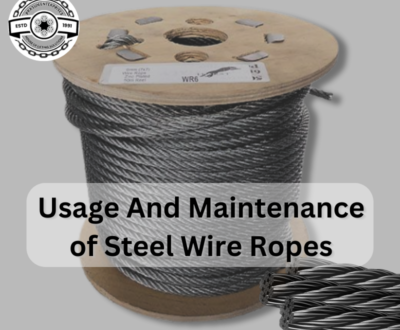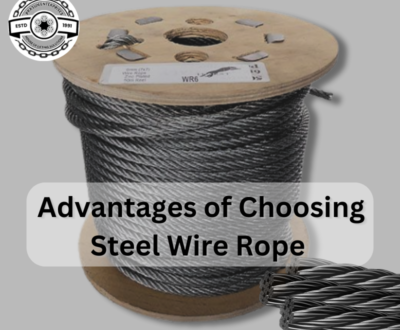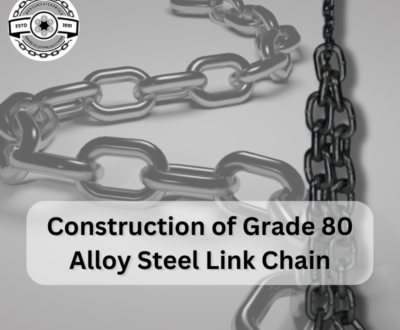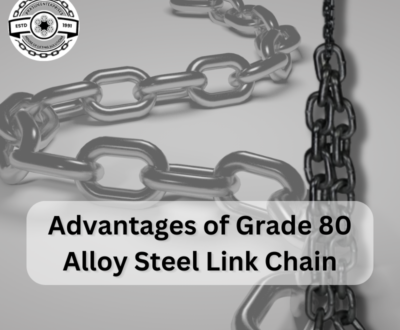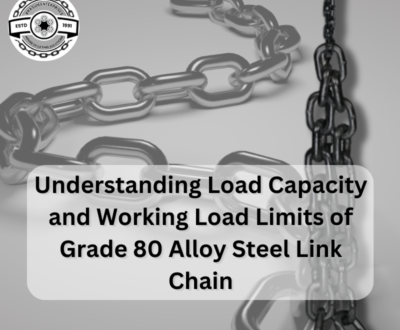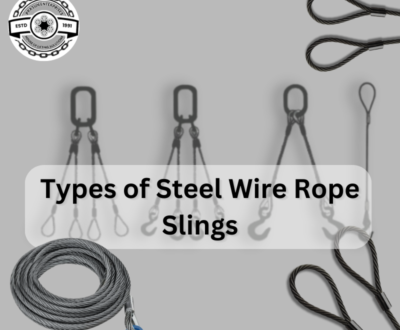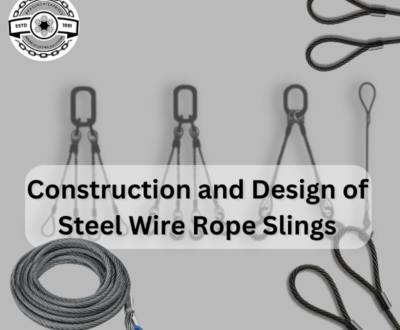
When it comes to lifting and rigging applications, selecting the proper equipment is vital to guarantee both security and effectiveness. One of the key choices you’ll face is choosing between different types of lifting equipment. Webbing slings, with their high flexibility and cost-effectiveness, are a prevalent choice. In this blog, we’ll be comparing Webbing Slings to other Slings such as wire rope slings and chain slings, to assist you make an informed decision about which alternative best suits your particular lifting needs.
Webbing Slings:
Webbing slings, also known as web slings, are made from strong, adaptable, and durable webbing fabric, ordinarily constructed from synthetic fibers like polyester or nylon. They offer several advantages that make them a favored choice in numerous lifting applications:
Advantages:
- Lightweight and Flexible: Webbing slings are lightweight and highly flexible, making them simple to handle and perfect for unpredictably shaped loads.
- Reduced Risk of Load Damage: Their broad, delicate surface zone decreases the chance of damaging the load, particularly when dealing with delicate or sensitive materials.
- Cost-Effective: Webbing slings are often more cost-effective than wire rope or chain slings, making them a budget-friendly choice for numerous industries.
- Versatility: Webbing slings are versatile and appropriate for a wide range of lifting applications, from industrial settings to transportation and construction.
- Ease of Use: They are user-friendly and require minimal training, improving security and productivity on work sites.
Wire Rope Sling:
The construction of wire rope slings is made from strong steel wire rope that can resist abrasion. They have unique advantages and are widely used in a variety of lifting applications:
Advantages:
- High Strength: Suitable loads can be achieved through the use of wire rope slings, which are known for their high tensile strength. Suitable for lifting.
- Durability: The product is resistant to wear and tear, resulting in extended durability even in harsh weather conditions.
- Heat Resistance: The durability of wire rope slings is well-established in high temperature settings and steel mills.
- High Cut Resistance: Excellent cut resistance in situations where the load has sharp edges.
Chain Slings:
Chain Slings are made from alloy steel chain links, typically 80 or 100 grade steel. These slings have unique advantages that make them a popular choice in certain industries:
Advantages:
- Exceptional strength: Chain slings are extremely strong and have high working load limits This makes it ideal for lifting very heavy loads.
- Durability: This material is highly resistant to damage and corrosion, making it a reliable choice for long-term protection in harsh environments.
- Flexibility and Adjustability: The chain sling is adjustable, allowing you to change length by using various attachment points and is flexible enough to fit the shape of your load.
- Multiple support options: The chain sling has a variety of support options, including a wide range of uses are possible, including hooks, grip hooks, and anchor hooks.
Comparing Webbing Slings to other Slings:
Comparing Webbing Slings to other Slings like wire rope slings, and lifting chain slings to determine which one is the most appropriate for your lifting task.
Flexibility:
- Webbing Slings: Webbing slings are highly flexible and versatile to different load shapes and sizes. They are perfect for sensitive or unpredictably formed loads.
- Wire Rope Slings: Wire rope slings are moderately flexible, but not as versatile to unpredictable shapes as webbing slings.
- Chain Slings: Chain slings offer flexibility and adjustability due to the different attachment choices. They are appropriate for a variety of load shapes and sizes.
Resistance to Abrasion:
- Webbing Slings: Webbing slings are less safe to abrasion compared to wire rope and chain slings, which are made of more strong materials.
- Wire Rope Slings: Wire rope slings are highly safe to abrasion, which is essential in cruel situations or when loads have unpleasant surfaces.
- Chain Slings: Chain slings are also highly safe to abrasion, making them appropriate for tough applications.
Cost and Maintenance:
- Webbing Slings: Webbing slings are generally more cost-effective than wire rope and chain slings. They require minimal maintenance and are simple to examine for wear and tear.
- Wire Rope Slings: Wire rope slings are more costly at first and require periodic lubrication to preserve their quality and resistance to corrosion.
- Chain Slings: Chain slings are typically more costly than webbing slings and require regular lubrication and inspection for optimal performance.
Weight and Handling:
- Webbing Slings: Webbing slings are lightweight and simple to handle, decreasing physical strain on workers during rigging.
- Wire Rope Slings: Wire rope slings are heavier than webbing slings, making them more awkward to handle and transport.
- Chain Slings: Chain slings are the heaviest among the three alternatives, and they can be physically demanding to work with, especially for longer lengths.
Environmental Considerations:
- Webbing Slings: Webbing slings don’t require oil and are generally considered more environmentally friendly than wire rope or chain slings.
- Wire Rope Slings: Wire rope slings require lubrication, which can lead to oil or grease spills that may hurt the environment.
- Chain Slings: Chain slings also require lubrication and are helpless to oil or grease spills.
Conclusion:
In conclusion, the choice between webbing slings, wire rope slings, and chain slings depends on the particular requirements of your lifting application. Webbing slings are the flexible and cost-effective choice, suitable for a wide range of loads and situations, particularly when load shape and weight change. Wire rope slings are the go-to choice for extremely heavy loads and cruel situations where abrasion resistance is essential. Chain slings exceed expectations in taking care of the heaviest loads, offer flexibility, and are ideal for tough applications.
Selecting the proper lifting gear is basic to guarantee the safety and productivity of your lifting operations. Carefully consider the load characteristics, environmental conditions, and budget limitations to create an informed decision that best suits your lifting needs. Eventually, the objective is to guarantee the safety of workers and the security of important resources during lifting and rigging operations.
More from our blog
See all postsRecent Posts
- Applications of Chain Pulley Blocks November 9, 2023
- Comparing Webbing Slings to Lifting Gear November 9, 2023
- Advantages of Webbing Slings November 9, 2023
